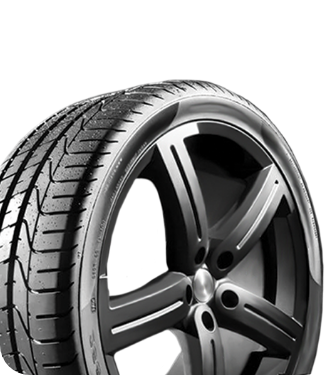

The Difference Between Tire Rotation and Balancing Explained
Tires |Keeping your vehicle in top shape involves more than just oil changes and brake checks. Too often, car owners overlook the importance of tire maintenance, such as rotations and balancing.
Many drivers don’t even understand the difference between tire rotation and balancing. Continue reading to learn what these maintenance services are, their benefits, and how frequently drivers should conduct these services for their vehicles.
The Foundation of Tire Maintenance
While routine tire care might not be the most glamorous component of car ownership, it’s extremely important. Tire maintenance makes certain that your vehicle has sufficient traction on the road and keeps passengers safe. Whether you’re a daily commuter or a weekend traveler, tire rotations and balancing make a difference for all drivers.
Tire Rotations and Why They’re Important
The first tire maintenance service that every driver must know about and practice is tire rotations.

What Is Tire Rotation?
Tire treads come into contact with the road as you drive. After many miles of travel, the tread gradually wears down and loses traction.
Tire rotation is the process of moving your tires from one position on your vehicle to another. This procedure ensures all four tires wear evenly over time. Factors such as front-wheel drive, rear-wheel drive, and varying weight distribution can cause tires to wear down at different rates.
For instance, the front tires commonly endure accelerated wear compared to the rear tires because the front end bears more weight from steering and braking. By regularly rotating your tires, you promote uniform tread wear across all tires. This not only extends the tires’ life span but also enhances the vehicle’s performance.
Benefits of Tire Rotation
Regular tire rotation provides a multitude of benefits that improve your driving experience. First and foremost, it maximizes the longevity of your tires, so you can save on replacements over time.
Uniform tire wear contributes to a smoother and safer driving experience because your vehicle maintains better contact with the road. Your vehicle will benefit from a reduced risk of blowouts that are dangerous at high speeds and improved traction under uneven, wet, or slippery roads.
Moreover, routine tire rotation helps maintain balanced handling and consistent performance. This is fundamental to increasing your vehicle’s stability and handling during turns or sudden maneuvers.
How Often Should I Rotate My Tires?
A common guideline is to rotate your tires every 5,000 to 7,500 miles, but this range differs from vehicle to vehicle. The frequency of tire rotation varies based on your driving habits, road conditions, and the type of vehicle you drive.
Some manufacturers provide recommendations regarding tire rotation intervals, so it’s essential to consult your car’s manual for an accurate answer. Another way to keep your tires wearing evenly is to conduct routine checks when you notice varying tread depths. Regular tire rotations will keep you safe on the road, enhance your vehicle’s efficiency, and put your mind at ease behind the wheel.
Understanding Tire Balancing
Now that we’ve explained tire rotations, we can discuss tire balancing and the differences between the two tire care services.

What Is Tire Balancing?
Tire balancing evenly distributes the weight of your tires and wheels around the axle. Over time, various factors—such as wear and tear, uneven tire pressure, and road conditions—can cause disparities in your vehicle’s weight distribution. Imbalances can result in annoying vibrations, a shaky driving experience, and serious long-term damage to your vehicle.
Mechanics add small weights to specific locations on the wheels to correct any imbalances. By regularly balancing your tires, you are prolonging the life span of your tires, you have a more stable driving experience, and can minimize the risk of premature tire wear.
Benefits of Tire Balancing
One of the primary benefits of tire balancing is a noticeably smoother ride. Balanced tires greatly diminish vibrations for more comfortable drives. They also enhance fuel efficiency by reducing rolling resistance, allowing your vehicle to use less gas as you travel.
Balanced tires translate into lower maintenance costs over time. Your vehicle’s components—including the suspension and steering systems—endure less strain when drivers balance the tires.
Signs That Your Tires Need Balancing
Recognizing the signs of unbalanced tires will maintain your vehicle’s health and performance. Common indicators consist of persistent steering wheel vibrations, uneven tread wear on one side, and a noticeable decrease in ride comfort. If you find yourself feeling intense bumps and vibrations that weren’t present before, it’s time to balance the tires.
Other evident signs include if your vehicle pulls to one side while driving straight and if you notice an increase in road noise. If any of these warning signs emerge, you should consult a professional to get your vehicle back into shape.
Key Differences Between Tire Rotation and Balancing
Although both tire rotation and balancing are necessary for tire maintenance, they serve different purposes. Tire rotation focuses on promoting even tread wear by changing the position of your tires, while tire balancing uniformly distributes the vehicle’s weight across all wheels. The rotation process involves physically moving the tires, whereas balancing requires adding small weights to correct any imbalances.
Understanding when to rotate and balance your tires is vital for optimal performance. Drivers must rotate their tires periodically, typically every 5,000 to 7,500 miles, to ensure even wear. On the other hand, tire balancing is necessary whenever you notice vibrations or uneven wear or after installing new tires. Combining both services will keep your tires in top condition for years.
Other Essential Tire Services
Additional services contribute to the longevity and safety of your tires beyond tire rotation and balancing. One essential service is proper tire alignment. This process arranges the wheels to the correct angles to produce smooth handling and reduce tire wear.
Another tip for tire maintenance is to conduct seasonal tire changes. Some drivers prefer to switch to winter tires in colder months to boost the tires’ traction and the vehicle’s overall performance in cold, snowy, or icy conditions.
Regularly checking and maintaining the correct tire pressure is also crucial. Under-inflated or over-inflated tires cause uneven wear, decrease traction, and increase the likelihood of blowouts.
Rotate and Balance Your Vehicle’s Tires at JSA Ties
Tire balancing and rotation are imperative to preserve your vehicle’s safety and the longevity of your tires. If you need to service your tires in Corpus Christi, RNR Tire Express can take care of tire rotations, balancing, alignments, and more!
Our top-notch service team is ready to uphold the health and viability of your car’s tires. View our services online and schedule an appointment with one of our tire experts today!





